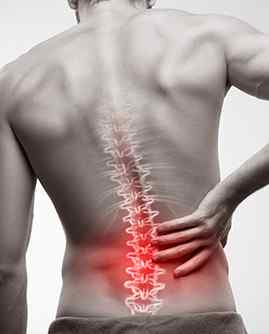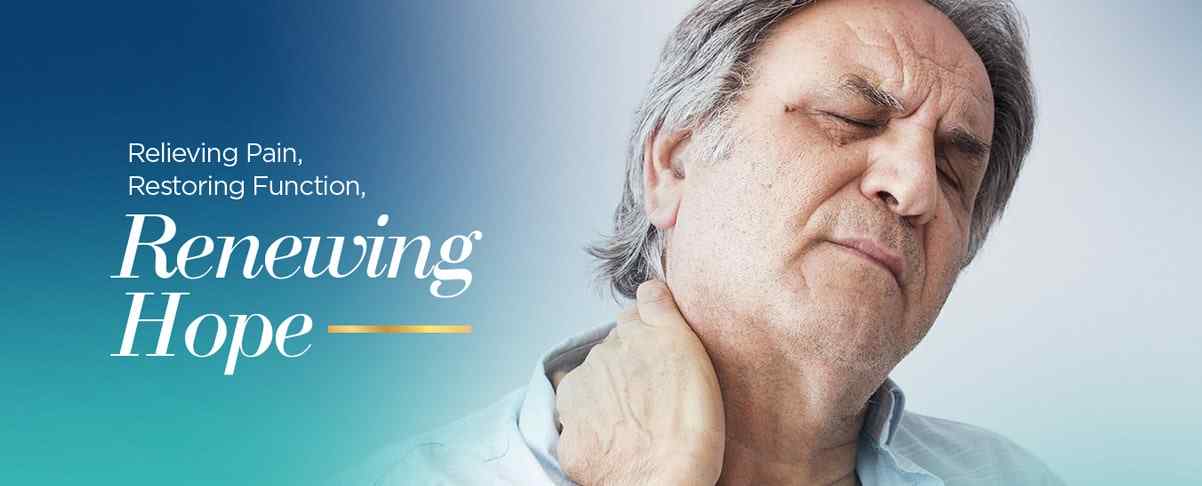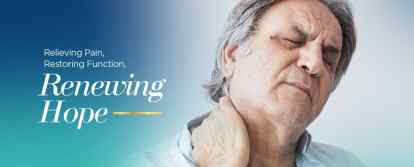Oxytocin: An Opioid-Free Option for Musculoskeletal Pain

Pain—it is the number one reason people visit a physician for care, can be detrimental to quality of life, and is notoriously hard to treat. From opioid pain relievers with questionable side effects to alternative medicine, people will try almost anything to find relief when their body is making them uncomfortable. Oxytocin, a hormone produced by the body, may offer some promise for those dealing with chronic levels of pain.
Best of all, oxytocin is opioid-free and may be beneficial for people living with a list of types of discomfort. Let's take a closer look at musculoskeletal pain, typical treatment methods, and how oxytocin nasal spray may help.
Chronic pain could be deemed as one of the biggest health problems plaguing the country. According to research published by the Centers for Disease Control and Prevention in 2018, roughly 50 million Americans are living with some type of chronic pain. This means that one in every five people you meet is physically hurting on a regular basis. While chronic discomfort can stem from a number of underlying problems, musculoskeletal pain is commonly to blame.
Musculoskeletal pain is pain that affects ligaments, joints, muscles, bones, or tendons. This form of pain can be caused by a number of things, such as:
-
Injury to part of the musculoskeletal system
-
Certain diseases or conditions, such as arthritis or fibromyalgia
-
Overuse of certain parts of the musculoskeletal system
While lower back pain is the most common type of musculoskeletal pain, people can also suffer from tendon or ligament pain, joint pain, muscle pain, or various other types of discomfort.

The characteristics of musculoskeletal pain can vary depending on which part of the body is hurting. For example, someone experiencing bone pain may feel a deep or stabbing discomfort that is more unsettling than something like muscle pain. Likewise, joint pain tends to result in stiffness or aching. A few common symptoms that can come along with musculoskeletal pain include:
-
General soreness
-
Swelling
-
Stiffness or mobility interference
-
Muscle spasms
-
Weakness or fatigue
While not all types of musculoskeletal pain are going to last forever, many people do experience long-term discomfort that can be called chronic pain. For reference, pain that lasts over three to six months is considered chronic in nature.
Pain is a multifactorial problem. In other words, pain is not just about the affected structure in the body or the function of that structure, it can also have major psychological factors. For example, two people can have exactly the same injury that results in chronic lower back pain, and one can deem the pain as less intense than the other.
People who deal with chronic pain often try numerous approaches to relieve their symptoms, whether that is physical therapy, meditation, prescription medications, or otherwise. In fact, some modern practitioners are tackling long-term discomfort as a multidisciplinary problem that may involve more than one physician.
Pain is also notoriously difficult to treat because the medications prescribed tend to only be safe or effective at the same dosage for a limited amount of time. For instance, someone prescribed opioids will develop a tolerance to the medication, which can require higher dosages and put the person at high risk for addiction.
By far, the most common way to treat pain historically has been with the use of opioid pain medications. While other prescription medications like anti-inflammatories and even muscle relaxers can prove to be effective for some, prescription pain medicines are more commonly prescribed. In 2019, more than 150 million opioid prescriptions were written in the United States. Unfortunately, opioids are highly addictive, and closely related to overdose deaths in the U.S. Research indicates that 70 percent of the deaths in 2019 due to overdose were related to opioids.
Other things a doctor may do or recommend to help a patient with physical discomfort include:
-
Therapeutic massage
-
Steroid injections
-
Physical therapy
-
Chiropractic musculoskeletal adjustments
-
Splints or braces
Alternative approaches may also be recommended, such as acupuncture or some form of holistic medicine. Lifestyle changes can also be beneficial for some patients. For example, if an individual has a great deal of knee discomfort, a doctor may recommend weight loss, strengthening exercises, or changes in activity levels.
For some patients, dealing with physical discomfort on a regular basis can have a detrimental effect on their mental health. Plus, people who are consistently physically uncomfortable can have problems with stress and mood. Therefore, it is not at all uncommon for chronic pain patients to be prescribed something like antidepressants or anxiety medications.
For many years, oxytocin-based medications have been known primarily for their use in encouraging uterine contractions during delivery. As one of the natural hormones created in the hypothalamus and then distributed by the pituitary gland, oxytocin is thought to play a role in everything from emotions to sexual functions and bonding.
Some evidence has suggested that oxytocin may help decrease sensitivity to pain and even improve mood in spite of the discomfort. To date, the neuropeptide has been reported to help lower pain levels associated with:
-
Headache
-
Constipation
-
Colon pain
-
Chronic lower back pain
-
Pelvic pain
-
Nerve pain
-
Postoperative pain
Several mechanisms make oxytocin a viable candidate for helping people who are dealing with chronic pain. For one, oxytocin is thought to stimulate the release of body-made opioids in the brain. Two, oxytocin can help improve mood and potentially lower stress response, which are both an issue among a lot of people who are dealing with a lot of pain. Lastly, oxytocin seems to activate GABA neurons that may inhibit pain response.
As noted, quite a few studies have been done on oxytocin and various types of pain. While oxytocin has been examined as an intravenous or subcutaneous medication in some of the research available, oxytocin nasal spray seems to offer similar outcomes.
Pelvic Pain
Pelvic pain can have a number of causes and is often hard to treat because of that fact. In a study of 21 women with chronic pelvic pain, oxytocin nasal spray seemed to offer relief for at least one in three of the participants. The group of women was given either a placebo or oxytocin nasal spray to use for 14 days. Not only was the improvement of pain sensations significant, but no adverse effects were reported.
Nerve Pain
Neuropathic (nerve) pain is widely known as one of the most difficult types of pain to treat. While musculoskeletal pain and neuropathic pain are two different things, the two can have close links in the human body. In animal studies published in 2018, oxytocin was shown to lower sensitivity to certain types of pain related to neuropathic pathways.
Chronic Lower Back Pain
In a study of 22 male patients with chronic low back pain, intranasal oxytocin was shown to lower pain intensity levels. While further studies are needed on the pain-modulating effects for chronic back pain sufferers, this study does show promise. Oxytocin nasal spray, at the least, could be a good conjunctive form of therapy that could be used to lower reliance on opioids or other treatments.
Postoperative Pain
Some evidence suggests oxytocin may help lower the levels of postoperative pain. In a study published in the European Journal of Pain in 2019, 30 patients were given subcutaneous (under the skin) oxytocin, lidocaine, or a placebo before laparoscopic surgery. Patients experienced less postoperative pain with both lidocaine and oxytocin.
Find Oxytocin Nasal Spray at a Compounding Pharmacy
With oxytocin having a seemingly good safety profile and offering a potential way to deal with pain, you may be interested in trying oxytocin nasal spray for yourself. The spray is typically available through compounding pharmacies like Harbor Compounding Pharmacy. If you are a chronic pain sufferer or have issues with ongoing musculoskeletal discomfort, please reach out to us so we can discuss the options that may be available beyond opioid medications. Our team of compassionate pharmacists will work with you and your doctor to find the best medicinal solutions.



